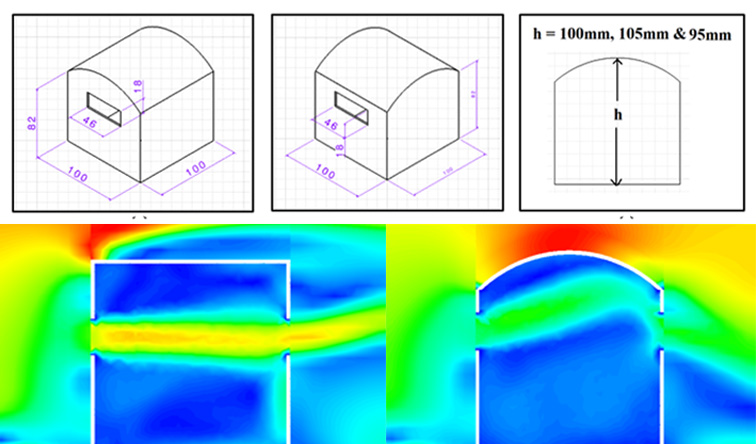A barrel roof with a single ventilation opening can prevent the most wind drift.
From the Journal: Physics of Fluids

WASHINGTON, Nov. 12, 2024 – Indoor badminton courts are often used for high-stakes tournaments, but even an enclosed court can affect the path of a birdie.
The airflow from a court’s heating, ventilation, and air conditioning (HVAC) system and cross ventilation plays a significant role in badminton. The lightweight feathered birdie passed between the players can be affected by low wind speed in the stadium. This is known as wind drift and has been at the center of multiple tournament controversies. While shutting off the ventilation may seem like the solution, this can lead to player discomfort and negatively affect performance.
Research published in Physics of Fluids, published by AIP Publishing, proposed that different roof configurations could help mitigate wind drift. Author Karthik Jayanarasimhan recommends that important badminton games be played on courts with a barrel roof and a ventilation opening.
“This research can be recommended for the new upcoming badminton stadium construction, where the roof types and opening selection can be made based on our suggestions,” said Jayanarasimhan.
To determine the optimal roof shape for the least wind drift, the team modeled the airflow in a barrel roof stadium with different ventilation opening directions. They tested this against a simulation of a flat roof to understand the roof effects.
The authors acknowledge that it’s not possible to rebuild every badminton stadium based on the recommendations provided in this paper. Instead, their research emphasizes the importance of selecting the areas within the court with the lowest wind drift for playing badminton games.
“For an existing barrel roof stadium, renovating the opening will be a good solution. Reworking the roof will be much costlier,” Jayanarasimhan explained.
Jayanarasimhan hopes these findings will help the sports community realize that there are better solutions for mitigating wind drift beyond just turning off the ventilation.
“We expect that with this pace of research down the road, wind drift complaints will be negligible from badminton tournaments,” said Jayanarasimhan. “We are preparing to study other roof configurations [and] the deviation of the shuttlecock trajectory in different wind directions and conduct a case study of the existing indoor badminton stadiums.”
###
Article Title
Authors
Vignesh S M, Nallavan G, Ramakrishnan R, and Karthik Jayanarasimhan
Author Affiliations
Tamil Nadu Physical Education and Sports University, Saveetha Institute of Medical and Technical Science
